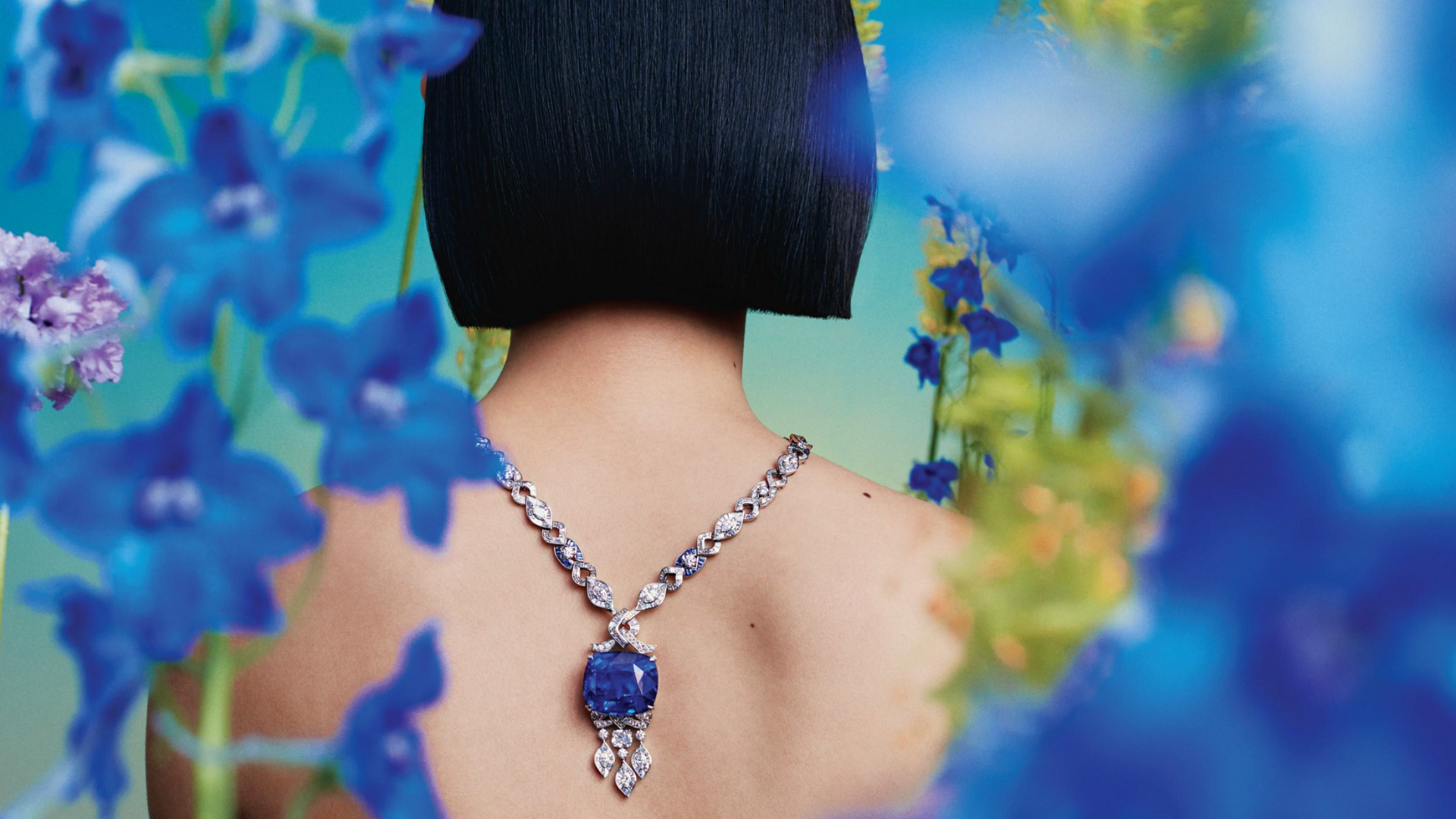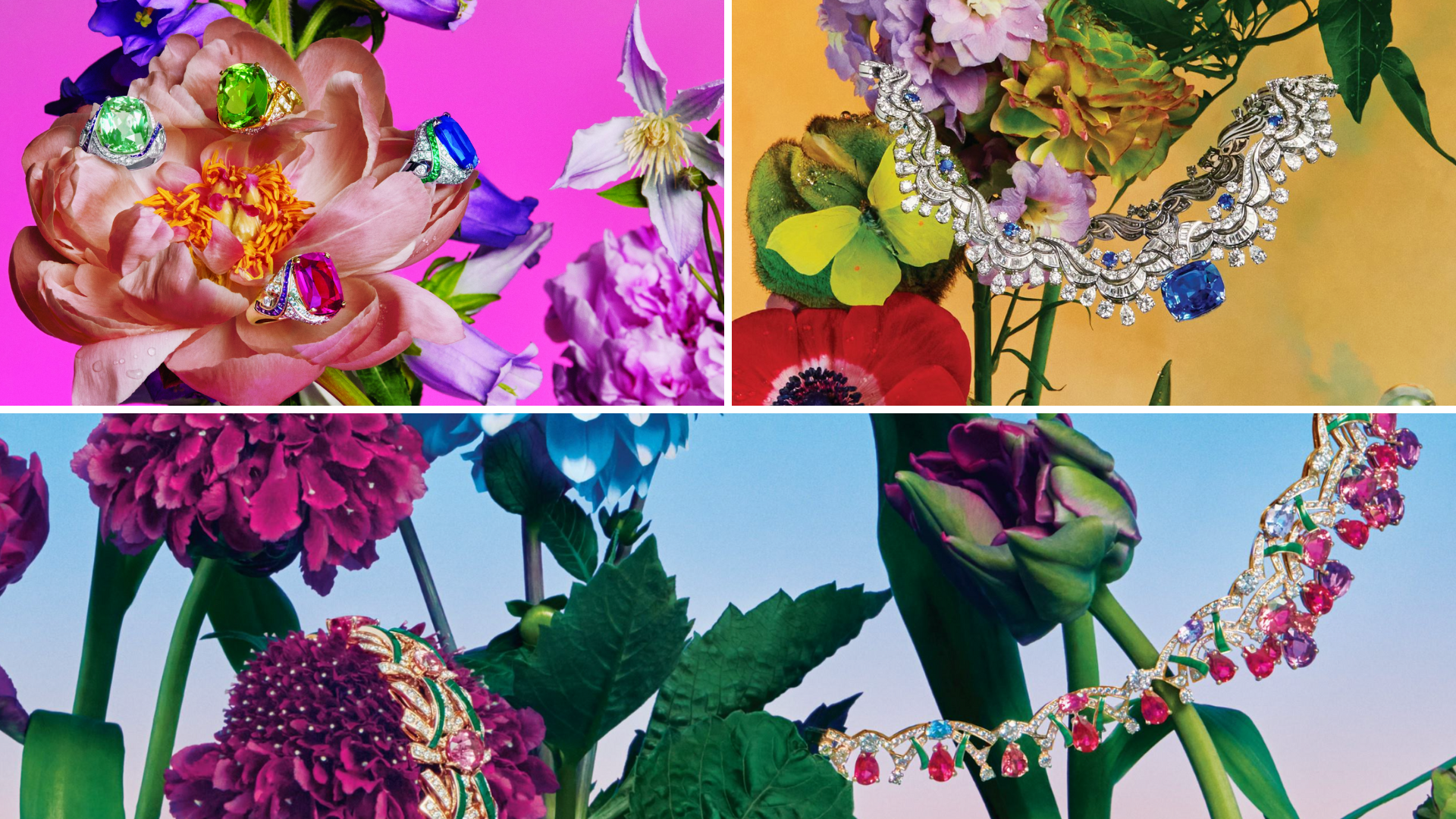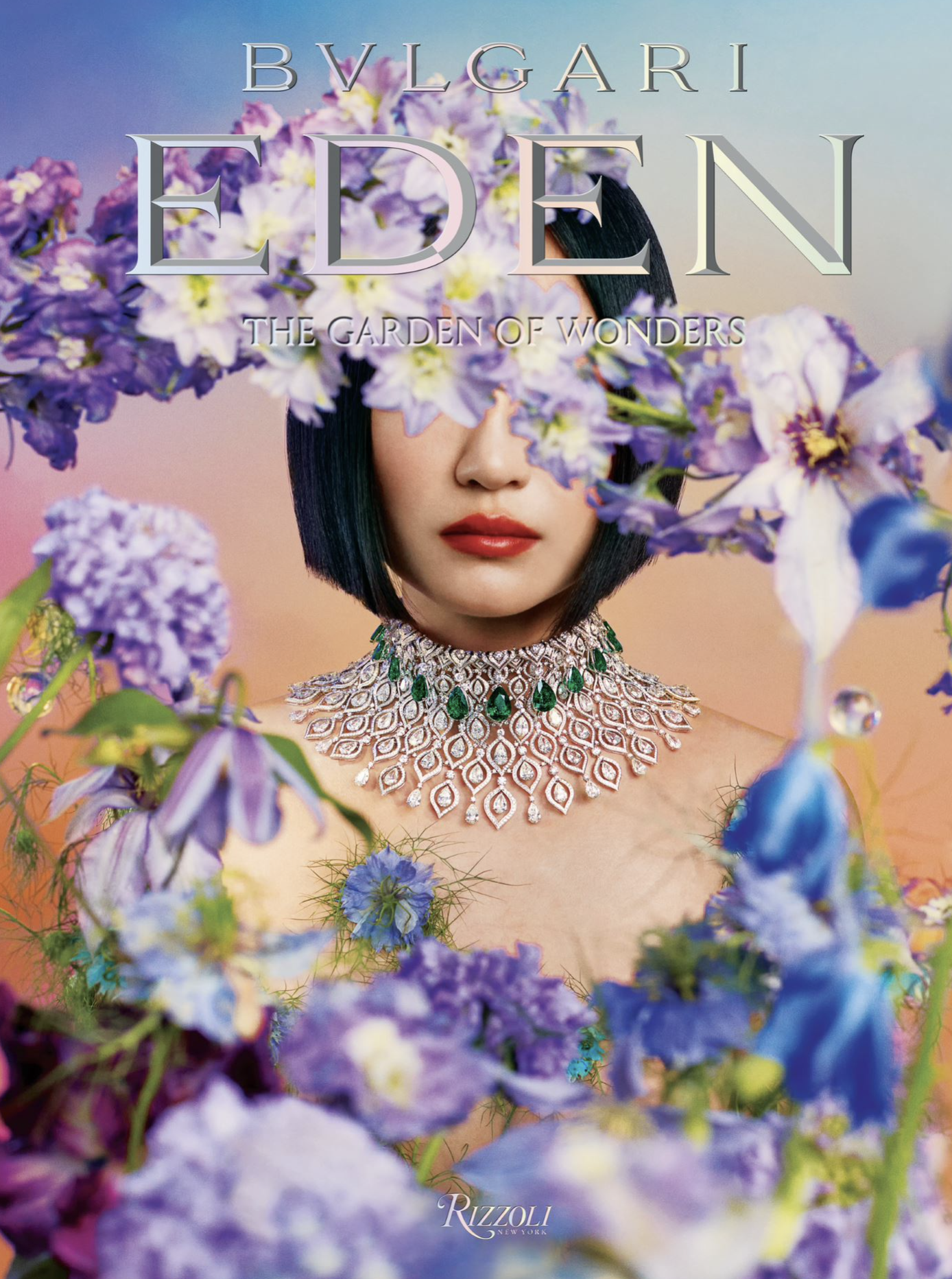By: SEBASTIAN PHILLIPS

A new book from Rizzoli turns the focus on Bulgari’s new garden-inspired collection as it reveals the brand’s audacious approach to high jewelry.
Earlier this year, the grand reveal of Bulgari’s The Garden of Wonders, the brand’s latest collection of high jewelry, elicited audible gasps from the guests gathered at the house’s Place Vendôme boutique in Paris. Even within this well-heeled, seen-it-all crowd, folks were unable to hold back when presented with the splendor of pieces such as the Emerald Glory, a malleable lattice made up of 220 carats of diamonds and 11 pear-shaped Colombian emeralds that took Bulgari’s master jewelers more than 3,000 hours to complete, and can be worn as a necklace, choker, or tiara. Marked by joyous color, opulent details, and unapologetic luxury, the 140-piece collection is par for the course for Bulgari, a label that will forever defined by its Roman sensibilities and La Dolce Vita ethos.

Inspired by a post-pandemic vision of Eden (one that values cultural diversity and inclusion), the collection’s beginnings and development make for an intriguing backstory, one that gloriously comes to life through impactful imagery and text in a new book from Rizzoli out this December. Bulgari Eden: The Garden of Wonders is not so much a behind-the-scenes account of creation, but rather a celebration of it. Divided into three chapters—“Blossoming Colors,” “Magnificent Nature,” and “Joyful Wonders”—the volume’s photography is the work of Cho Gi-Seok, a Korean creative whose refined, atmospheric images known for balancing purity and symbolism made him ideal for the project. Through his lens, The Garden of Wonders’ hypnotizing emeralds, rubies, sapphires, and tourmalines come alive against a backdrop of striking blooms.
Offering another layer of insight are the words of Lucia Silvestri, Bulgari’s jewelry creative director, who began her career in the company’s gemological department at the age of 18. Styled as a long-format poem that reveals the collection’s genesis, as well as her own creative process, Silvestri’s narrative lets us in on her magical thinking: “Whatever corner of the globe I find myself in, when I’m in search of inspiration, I look for a garden to carry me away… immersing myself to the point of getting lost in its mysterious, multiform beauty… Step by step, evocations turn into ideas, ideas into designs and designs into jewels.” Silvestri never reveals the Roman garden that kindled her final ideas for The Garden of Wonders, but that’s hardly the point; we can’t expect geniuses to divulge all their secrets. What’s clear is that her understanding of the collection is innate: “For me, Eden is this: the unique enchantment of a place where the incommensurable beauty of the millennia that preceded us entrusts us with a sachet of its rarest and most precious seeds, in order for us to find the perfect soil and moment to plant them, and thus ensure that beauty—that beauty which will save the world—never ceases to blossom.”
Further complementing this chosen lyrical approach are poems on nature from various eras and voices (from Emily Dickinson to Federico García Lorca), as well as sketches of the design process.
To put it all in context, Bulgari turned to Simone Marchetti, the director of Vanity Fair Italia, whose words populate the introduction. “Eden is not a place. Nor is it a dream. Eden is a starting point,” she writers. “It is in this context, in a given place, an Eden bound up more with dreams, with what we don’t know but can only envisage in an otherworldly dimension—and hence free from the constraints of reality—that The Garden of Wonders and this book are presented. They are the emerald, diamond, ruby, and spinel reflection of the new dream we all need to start dreaming.” rizzoliusa.com; bulgari.com

